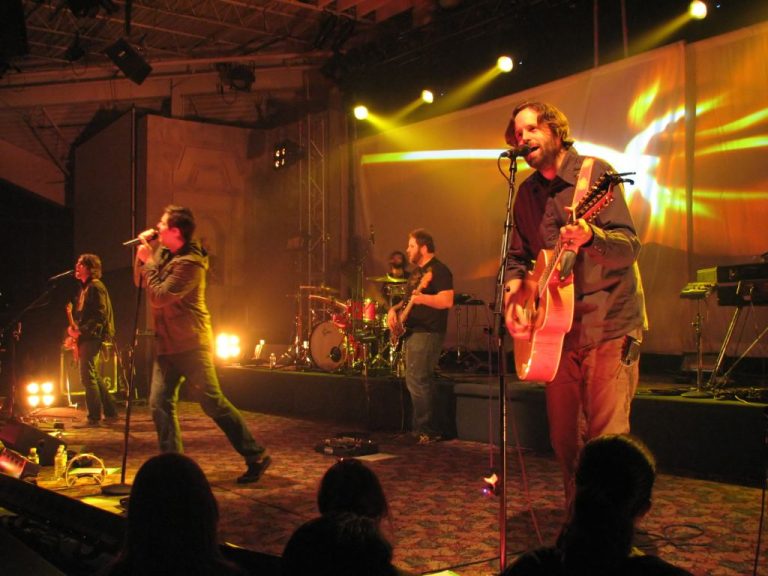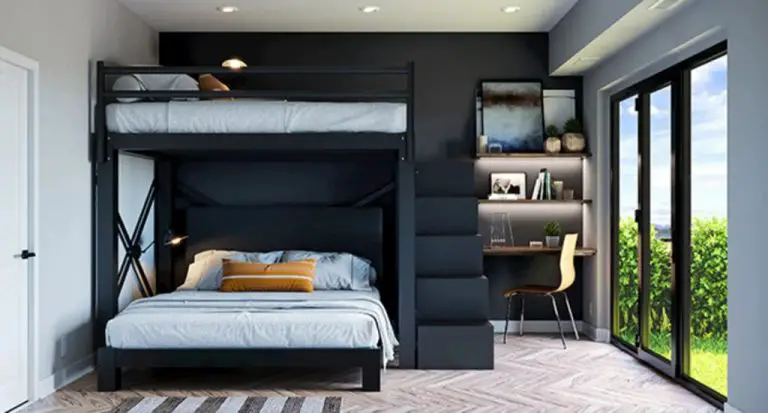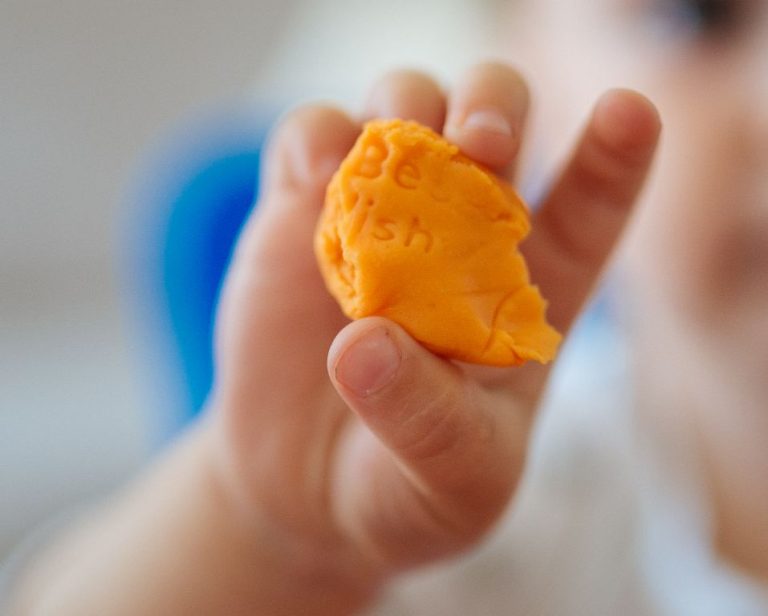Can A Microwave Be Used As A Kiln?
What is a Kiln?
A kiln is a thermally insulated chamber used for the heating, drying, and hardening of materials such as ceramics, pottery, bricks, limestone, and wood (source). The main purpose of a kiln is to fire clay and ceramic objects at high temperatures to permanently harden them through a process called sintering.
There are several different types of kilns used in ceramic production:
- Electric kilns use heating elements to generate heat. These are the most common type used by ceramic artists today.
- Gas kilns burn natural gas or propane to produce heat. They allow more control over the firing atmosphere.
- Wood-fired kilns use wood as fuel. They provide unique atmospheric effects but can be more labor-intensive to operate.
- Raku kilns are small, portable kilns that allow ceramic pieces to be fired and cooled quickly to produce distinctive finishes.
Proper control of temperature, heating rate, atmosphere, and duration of firing are all critical factors in successfully operating a kiln to produce high quality ceramic products.
What is a Microwave Oven?
A microwave oven is a common kitchen appliance used for cooking and reheating food quickly. Microwaves work by generating electromagnetic waves that cause water molecules in food to vibrate rapidly, producing friction that heats the food (Source).
Microwave ovens contain a magnetron that converts electricity into high-powered radio waves. These microwaves are channeled into the interior cavity and absorbed by food. The rapid vibrations generated by the microwaves cause the food molecules to heat up very quickly (Source).
Microwave ovens are typically used for reheating leftovers, defrosting, and cooking or baking certain foods in a faster way than conventional ovens. Common uses include heating up meals, softening butter, making popcorn, boiling water, and cooking frozen dinners or baked goods (Source).
Key Differences Between Kilns and Microwaves
Kilns and microwave ovens have some fundamental differences in how they operate and what they are typically used for. Here are some of the key contrasts between the two:
Temperature Range: Kilns are able to reach much higher temperatures, often over 2,000°F or 1,100°C. They can fire clay and glazes to high temperatures needed for stoneware and porcelain. Microwaves typically only reach up to about 275°F or 135°C, which is only suitable for low-fire clay work.
Heating Method: Kilns use radiant heat that slowly penetrates and evenly heats the entire contents inside the chamber. Microwaves rely on microwave energy that causes molecules in the contents to vibrate rapidly, producing internal heat. This tends to heat things unevenly.
Intended Use: Kilns are designed specifically for firing ceramics, glass, and other materials requiring high sustained heat. Microwaves are everyday kitchen appliances meant mainly for cooking food. While microwaves can be modified for some clay firing, they lack the precision controls and uniform heating kilns provide.
In summary, kilns allow much higher temperatures, radiant heating, and precise control because they are purpose-built for firing ceramic materials. Microwave ovens use very different technology meant for quick cooking tasks, not high-temperature firing.
Can You Fire Clay in a Microwave?
It is possible to fire clay in a microwave, but there are some significant limitations and risks to be aware of. Microwaves heat unevenly, which can lead to cracks or explosions in clay. The intense heat can also potentially damage the microwave itself. Additionally, the small size of most microwave ovens places tight restrictions on the size of pieces that can be fired.
One of the biggest issues with microwaving clay is the uneven heating. Microwaves work by exciting water molecules, which heat up quickly, while the surrounding material heats more slowly. This discrepancy in heating can cause clay to crack or explode from rapid expansion of the interior water. According to Ceramic Arts Network, thicker areas of clay heat faster than thinner areas, compounding the unevenness.
Microwaving clay also runs the risk of damaging the microwave itself. The intense heat can melt interior components not designed to withstand high temperatures. Metallic materials like glazes can arc, potentially damaging the magnetron. It’s advisable to dedicate an older microwave solely for clay firing purposes.
Finally, the compact interior of a microwave oven significantly limits the size of pieces that can be fired. Most standard microwaves have an interior height under 10 inches, restricting them to small items like jewelry or beads. Larger ceramic pieces would be difficult or impossible to microwave fire successfully.
Microwave Kiln Alternatives
While microwaves can be used in some cases for firing clay, they have limitations in reaching the high temperatures needed for most ceramics. There are several other options for small at-home kilns that may work better than trying to use a standard microwave.
Small Electric Kilns
Purpose-built electric kilns designed for ceramics can safely reach temperatures over 1000°C. Mini kilns with a few cubic feet of space are affordable options starting around $200. These give artists much better control and results than improvising with a microwave. Top brands like Olympic, Skutt, and Paragon make tabletop kilns perfect for home studios.
Toaster Ovens
A basic toaster oven with a ceramic interior can potentially get up to 300°C. With care, these can bisque and low-fire small pieces. The compact size allows testing glazes and clays. While they have limits, a toaster oven kiln is low cost and simple to try. Preheat slowly and use a kiln sitter for safety.
Standard Ovens
A standard kitchen oven can also work in some cases with care. It may reach 350-400°C at most, so is best only for low-fire clay work. Pick an oven with a smooth, non-plastic interior. Limit the size of pieces, preheat gradually, and monitor temperature. Test for safety first with an empty oven before attempting to fire clay.
Tips for Attempting to Use a Microwave as a Kiln
If you plan to attempt firing clay or glass in a microwave, keep these tips in mind:
Use microwave-safe materials. Porcelain and stoneware clays are often safe options, as are glass and glazes specifically designed for microwave use. Avoid metal and materials with unknown compositions (Microwave Kiln Basics and FAQs – Before You Buy).
Go for small pieces. Microwaves have limited space and uneven heating, so only fire individual small pieces like jewelry or beads (Microwave Kilns Advanced Tips and Tricks). Large or complex pieces likely won’t fire evenly.
Monitor closely and frequently. Check the kiln every 30 seconds or minute to watch for hotspots, cracking, or changes in the material. Be prepared to stop or make adjustments.
The Risks of Using a Microwave as a Kiln
While using a microwave as a kiln may seem like an inexpensive and convenient option, there are several risks to be aware of:
Fire hazard– Heating metal, gold, and silver in a microwave can lead to electrical arcing and fires. Clay and ceramic materials with metallic additives or paints can also create this risk. Always check your materials and avoid using anything with metal (source: https://www.soulceramics.com/pages/microwave-kiln-things-to-consider).
Uneven heating – Microwaves often heat materials unevenly, leading to cracking or exploding. Rotating pieces frequently can help, but achieving an even heating throughout is difficult. Traditional kilns are designed for gradual, even heating (source: https://www.glacialartglass.com/blogs/tips-and-tutorials/blog-everything-you-need-to-know-before-buying-a-microwave-kiln).
Damage to the microwave – Excessive heat and fumes can damage the internal components of a standard kitchen microwave. Specialized microwave kilns are built to withstand high heat firing.
Settings and Techniques to Try
When attempting to fire clay in a microwave, it’s important to use the proper settings and techniques to try to get the best and safest results. Here are some tips from artists who have experimented with microwave firing:
Use low microwave power and short bursts. Microwaves generate intense heat very quickly, so firing clay on high power can lead to cracking or explosions. Start with 30-second bursts at 10-30% power and check the clay often.
Use a microwave-safe container. Choose a container made of microwave-safe material like glass or ceramic. This helps protect the microwave and evenly distribute heat. Avoid metal containers.
Elevate the clay piece in the container. Set the clay on an inverted cup or balls of crumpled aluminum foil to raise it off the floor of the container. This allows heat to circulate underneath.
Rotate and flip the piece during firing. Heat exposure can be uneven in a microwave, so periodically open the door and rotate or flip the clay to help prevent hot spots.
Allow proper ventilation. Leave the door ajar after firing to let heat escape and the piece cool gradually. Abrupt temperature changes can cause cracks.
Work in small quantities. Microwaves work best for firing very small, thin pieces. Larger or thicker pieces may end up under-fired in the center.
Results and Reviews from Artists
Many ceramic artists and potters have experimented with using microwaves as makeshift kilns to fire clay. While results vary, some artists have successfully created small ceramic pieces like beads, pendants, and mini sculptures in a microwave kiln. However, reviews from artists showcase both the opportunities and limitations of this technique.
In a video review, ceramicist Emily Reason shares examples of jewelry and small sculptures she fired in the microwave using special microwave-safe kiln materials. She notes that pieces fired in the microwave had more color variation and blushing effects compared to an electric kiln. The microwave also achieved melting effects in a short firing time. However, she does not recommend using the microwave for functional pottery due to uneven heating.
The artist behind the blog Glaze Experiments expresses excitement over the effects achieved on ceramic pieces fired in a microwave kiln, such as cracking textures and unique glaze reactions provoked by the microwave’s rapid heating. However, the artist notes it took much trial and error to determine the right clay body, glaze recipes, and firing technique to get successful results in the microwave without causing clay to explode.
Reviews showcase the experimental, artistic opportunities microwave kilns can provide. However, the inconsistent heating and risks involved may limit results for more utilitarian ceramic ware. Proper microwave-safe materials and cautious trial of suitable techniques is key to achieving the best artistic effects.
Conclusion
In summary, while microwaves and kilns are both used to heat objects, they work in very different ways. Kilns allow for slow, even heating at high temperatures over long periods of time. In contrast, microwaves produce quick internal heating that can cause thermal shock and explode ceramics.
While some artists have reported success firing small, simple pieces in modified microwaves on the lowest power setting, this is an extremely risky endeavor that is not recommended. The variability in microwaves makes consistent results nearly impossible.
For most ceramists interested in microwave firing, the safest option is purchasing a dedicated small kiln or oven designed for ceramics. While not as fast as a microwave, these kilns allow proper slow firing without the risks of thermal shock and explosion. For one-off experiments, a modified toaster oven may provide middle ground.
In conclusion, while microwaves may technically produce enough heat to fire clay in some circumstances, the process is simply too dangerous and inconsistent to be a viable option for most artists. A small hobby kiln remains the best investment for reliable ceramic firing.



